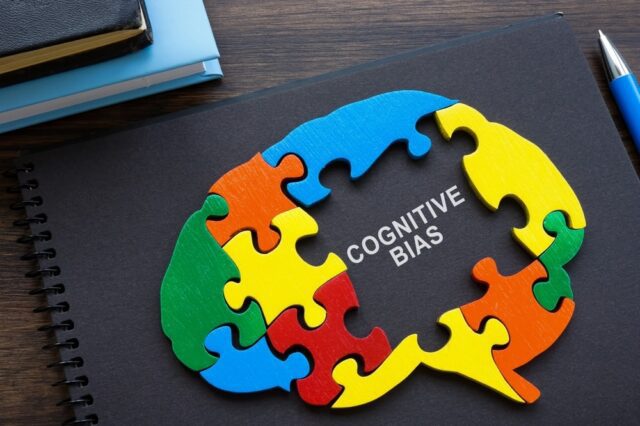In our daily interactions, conflicts often arise due to differences in opinions, values, or beliefs. While these conflicts may seem unavoidable, understanding the underlying cognitive biases can help us navigate through them more effectively.
Cognitive biases are inherent shortcuts in our thinking patterns that can lead to distorted judgments and decision-making.
9 Types of Cognitive Biases that Fuel Conflict
In this blog post, we will examine nine important cognitive biases that commonly fuel conflicts and explore strategies to mitigate their influence.
1) Confirmation Bias
Confirmation bias is our tendency to search for, interpret, and remember information that confirms our preexisting beliefs while ignoring or dismissing contrary evidence.
In a conflict scenario, individuals tend to pay more attention to relevant information that supports their own views, reinforcing their position and making it challenging to find a common ground. Confirmation bias perpetuates conflict by amplifying disagreements and making it difficult for parties to see things from a different perspective.
To mitigate the impact of confirmation bias, it is crucial to actively seek out diverse viewpoints and evidence that challenge our own beliefs. Engaging in open discussions, considering alternative viewpoints, and being receptive to valid counterarguments can help foster a more objective and constructive approach to conflict resolution.
2) Anchoring Bias
Anchoring bias refers to our tendency to rely too heavily on the first piece of information encountered when making decisions, even if it is irrelevant or misleading.
In conflicted situations, this bias can manifest as the fixed adherence to initial positions or proposals, making it difficult for the parties to explore a range of possibilities. The anchoring bias locks individuals into rigid positions and inhibits the flexibility necessary for finding mutually beneficial resolutions.
To overcome anchoring bias, it is necessary to employ strategies like reframing the problem and considering diverse viewpoints. Another way to overcome anchoring bias is brainstorming sessions. Allowing this time for reflection can lead to creative solutions that go beyond the initial anchor points and help resolve conflicts in a more constructive manner.
3) Bias Blind Spot
The bias blind spot refers to our failure to recognize our own cognitive biases while readily identifying them in others. In conflicts, biases can lead to a lack of self-awareness and an inability to objectively evaluate our own contributions to the disagreement. By attributing conflict solely to the biases of others, individuals perpetuate conflict and hinder progress toward conflict resolution.
To mitigate the bias blind spot, maintaining a constant self-reflection practice is crucial. Regularly challenging our assumptions, seeking feedback from others, and fostering a growth mindset can help uncover personal biases and promote a more empathetic and understanding attitude toward conflict resolution.
4) Dunning-Kruger Effect
The Dunning-Kruger effect describes the cognitive bias that occurs when individuals with low ability or knowledge in a particular area overestimate their own competence. In conflicts, this bias can lead to inflated self-assurance and the dismissal of opposing perspectives. This overconfidence serves as a major obstacle to reaching productive compromises as it reduces the willingness to consider alternative viewpoints.
To counteract the Dunning-Kruger effect, fostering a culture of humility and acknowledging the limits of our knowledge becomes crucial. Encouraging continuous learning, actively seeking feedback from experts, and cultivating a willingness to reconsider our positions can help mitigate this bias and lead to more effective conflict resolution.
5) Zero-Sum Bias
The zero-sum bias refers to our tendency to view situations as win-lose scenarios, where any gain made by one party must result in an equal loss for another. In conflicts, this bias perpetuates a competitive mindset, pitting one party against the other and hindering collaboration toward mutually beneficial outcomes.
To overcome the zero-sum bias, it is essential to reframe conflicts as opportunities for integrative solutions where both parties can benefit. Encouraging dialogue, building trust, and finding common ground can help shift the focus from a win-lose mindset to one of cooperation and compromise.
6. Implicit Bias
Implicit or unconscious bias refers to the unconscious attitudes, stereotypes, or preferences that influence our understanding, actions, and decisions toward individuals or groups. Implicit biases are ingrained through exposure to societal norms and personal experiences, often without our awareness.
In conflicts, implicit biases can cause us to make assumptions or judgments that are not based on facts, leading to misunderstandings and escalating disputes.
To mitigate the impact of implicit bias, it is essential to foster self-awareness and continuous learning. Engaging in activities that expose us to different perspectives, such as diversity training or cultural exchanges, can help in recognizing and questioning our unconscious bias.
Additionally, practicing mindfulness and reflection helps in identifying moments when our judgments might be clouded by these hidden unconscious biases. By actively working to understand and address our unconscious bias, we can improve our interactions and decision-making processes, leading to more effective and equitable conflict resolution.
This conscious effort to overcome unconscious bias enhances our ability to navigate through conflicts more constructively.
7. In-Group/Out-Group Bias
In-group/out-group bias, also known as in-group favoritism, is the tendency to give preferential treatment to members of one’s own group while discriminating against those not in the group. This bias can manifest in various social settings, from workplaces to wider community interactions, often leading to conflict and perpetuating divisions within societies.
To mitigate the negative impacts of in-group/out-group bias and reduce conflict, fostering increased interaction between different groups is crucial. Encouraging cooperative activities that require collaboration toward common goals can help reduce feelings of division and increase the inclusion of out-group members, thereby reducing conflict.
Additionally, we should raise awareness of this bias through training or educational programs that can enhance individual understanding of how their actions might be influenced by such biases, thus encouraging more inclusive behaviors and reducing potential conflicts.
Moreover, adopting perspective-taking can help individuals recognize and adjust their behaviors to avoid conflict. By considering how a neutral third party might view a situation, one can better identify when in-group bias is at play and make more objective decisions.
Integrating these strategies into regular organizational or community practices can significantly alleviate the conflicts and tension driven by in-group/out-group biases, leading to more harmonious and productive interactions.
8. Halo and Horn Effect
The halo/horn effect is a cognitive bias that causes our overall impression of a person, company, brand, or product to be influenced by our judgments of its positive or negative traits. If the overall impression is positive, the halo effect comes into play, making everything about the person or thing seem better than it perhaps is. Conversely, the horn effect occurs when a negative impression casts doubt on the qualities or abilities of someone or something.
To overcome the halo/horn effect and promote more constructive conflict resolution, it’s crucial to engage in systematic and objective evaluations. This approach is particularly beneficial in effective conflict resolution processes, as it prevents personal biases from influencing the outcomes.
Employers, for instance, can mitigate the halo/horn effect by using structured interviews and defined criteria for evaluations, ensuring that assessments are fair and comprehensive. This helps in finding mutually beneficial resolutions to workplace disputes or team dynamics.
Encouraging awareness and training on this type of conflict bias can also aid individuals and organizations in recognizing when decisions are being unduly influenced by superficial traits. This fosters a more balanced perspective—essential for fair decision-making and effective communication within teams.
9. Reactive Devaluation
Reactive devaluation is a cognitive bias where individuals devalue proposals or ideas simply because they come from a perceived adversary or competitor. This bias can significantly hinder conflict resolution processes as it leads to the rejection of potentially beneficial solutions based solely on their source, not their merit. This bias plays a significant role in exacerbating conflict dynamics, making it challenging to reach agreements or resolve conflicts effectively.
To help mitigate reactive devaluation, it is crucial to foster perspective-taking and enhance trust among conflicting parties. One effective strategy is to increase transparency about the origins and rationale of proposals, ensuring that all parties understand the benefits objectively, without bias clouding their judgment.
Additionally, involving neutral mediators can help reframe proposals in a way that does not necessarily reflect the adversarial positions, thus minimizing the impact of the bias on conflict dynamics.
Structured communication and pre-negotiation agreements that outline mutual goals and interests can also reduce the effects of reactive devaluation. By emphasizing shared benefits and promoting understanding, parties can move beyond personal biases and toward finding mutually beneficial resolutions.
Turn Conflicts into Growth Opportunities
Conflicts are an inevitable part of human interactions, but understanding the cognitive biases that fuel conflicts can empower you to approach them more effectively. By recognizing and mitigating biases such as confirmation bias, anchoring bias, bias blind spot, Dunning-Kruger effect, and zero-sum bias, we can foster open discussions, empathy, and collaboration, leading to more constructive conflict resolution.
By embracing these strategies, we can transform conflicts into opportunities for growth, cooperation, and mutual understanding. Each conflict we encounter is a chance to enhance our conflict research, deepening our understanding of the complexities of human behavior and the information encountered in our daily interactions.
Join us for our comprehensive course on cognitive biases to explore these concepts further and learn effective strategies to overcome cognitive biases. This course is designed to equip you with the knowledge and tools needed to identify and counteract biases, enhancing your ability to resolve conflicts and foster a more collaborative environment. Enroll in our cognitive biases course today and transform your approach to conflict resolution.



